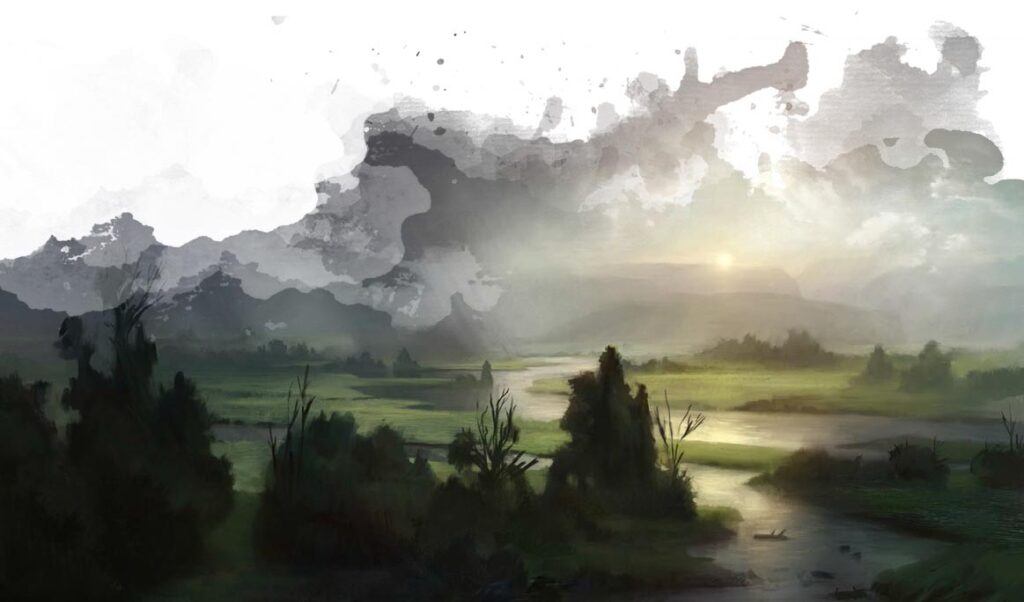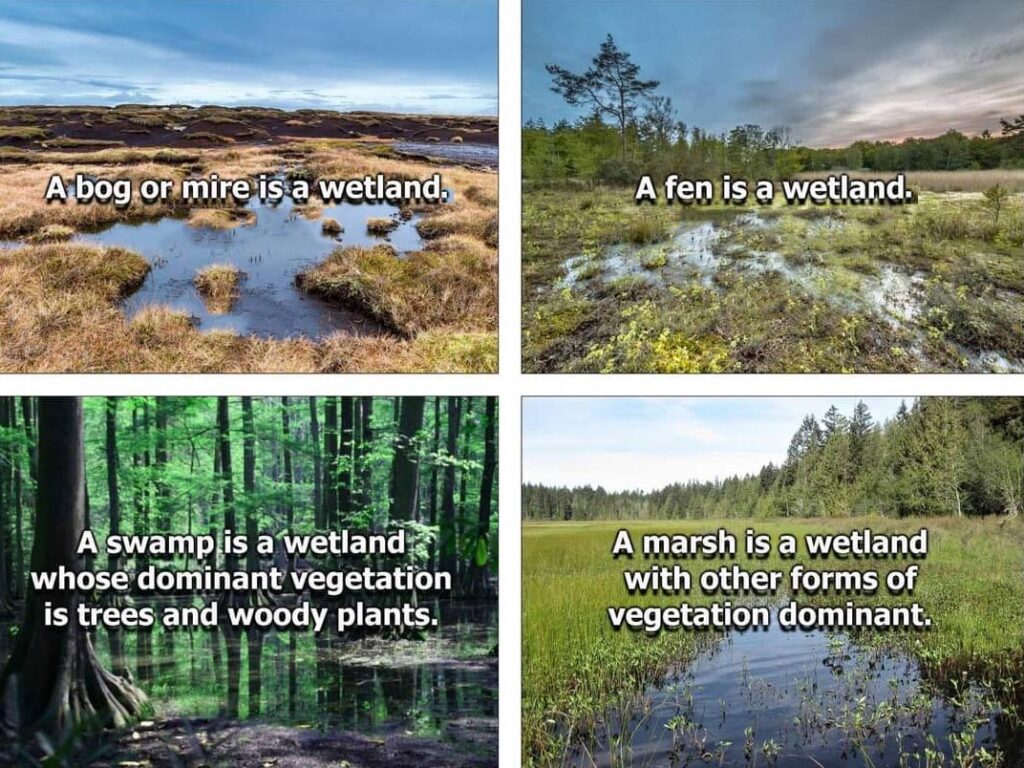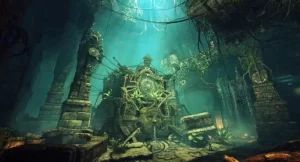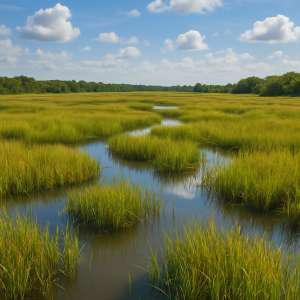
Marshes are areas dominated by large bodies of water and reeds. While most often these areas can be found near lakes or rivers, they can also form a larger area filled with occasional islands of trees. Especially warm climates can have huge mangrove forests surrounded by marshes.
Large marsh areas are labyrinths of waterways and shallow waters. The depth of the water varies wildly and while at times traveling by foot is possible, most civilized creatures use boats or rafts when moving through them.
The reeds in marshes can often be high enough to obscure vision for small or shorter creatures, but sometimes even medium-sized creatures aren't able to see through the reeds. Taller creatures can see over the reeds and stride through the shallow water faster, so running away from large or bigger creatures with long legs can be unfeasible. Depending on the thickness of the reeds, a character's vision can be either obscured or heavily obscured beyond 30 feet.
Getting lost in a marsh is easy: vision is impaired, and every spot looks identical. Landmarks can be hard to find and even orienting oneself can get troublesome at times. Maps are rare, so the best option for a group of adventurers is to hire a boat and a guide to find their way.
Obviously, amphibian creatures have an advantage in these environments as they can usually move faster than other creatures. Humanoids travelling through marshes often use boats or rafts, which amphibian monsters naturally will try to capsize.
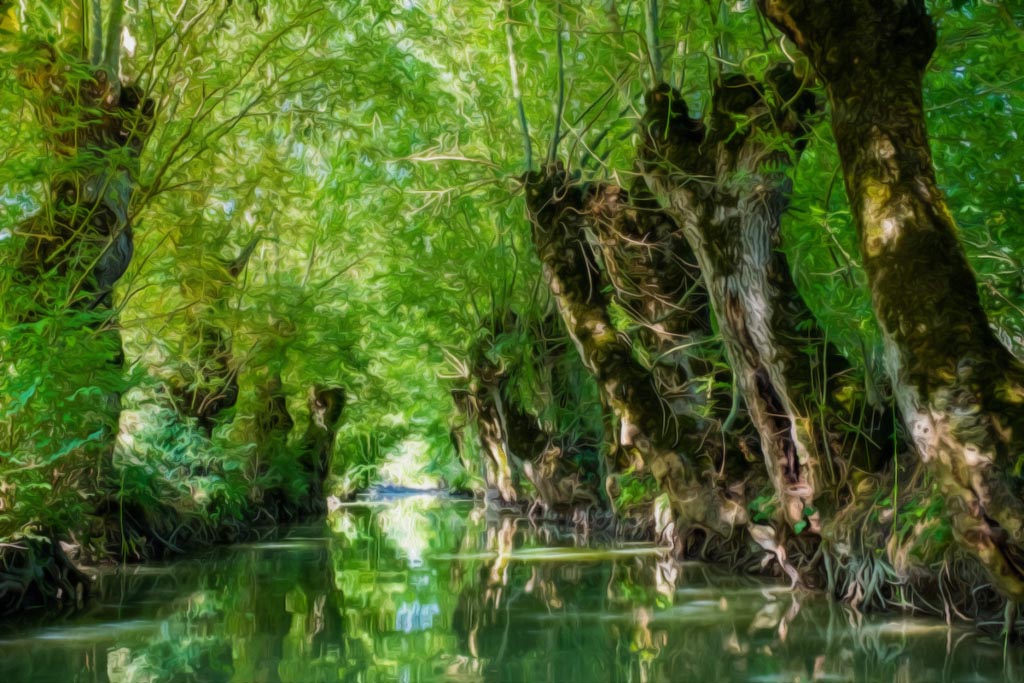
There are many types of creatures, animals and monsters that live in the marshes: from the undead to giant toads, from crocodiles to swarms of insects, from lizardfolk to trolls: always traverse with caution.
Humanoids use marshes to hunt birds and fish. Life is abundant in these areas, and a skilled hunter or a fisher can use the environment to their advantage. The reeds can also be useful: thatched roofs are made from reeds harvested from marshes, and some reeds can be used for making papyrus or similar paper-like materials.
Constructing buildings is very difficult in marshlands. These areas are prone to flooding, so people construct stilt houses high above the water line. Whole villages can be constructed on stilts and are usually accessed via boats instead of roads. Some cultures may extend such villages by creating artificial floating islands out of reeds and soil, providing an excellent location for a garden, for example.

Should always consider special encounters. There may be solitary huts concealed in the marshlands that work as hiding places for bandits and smugglers. Sometimes hedge wizards (a self-taught spellcaster that could perform cantrips, make basic potions, and scribe simple scrolls) or other outcasts build these lonely huts deep into the marshes to get away from the civilized world.
Some spellcasters go even further: they enchant the hut with the ability to walk and move when their owner wills it. The hut may be stationary and sit on an island when the stilts are not needed, hiding the magical abilities of the hut. Some hags may create outlandish versions of such huts by creating magical legs, such as chicken legs, that carry the hut around.
A walking hut is often tied to the spellcaster that created it but may also be autonomous. In these cases, it is even possible to commandeer such a hut if the party has a sufficiently skilled spellcaster that can find the method of controlling the hut by passing a DC 20 Arcana check.
